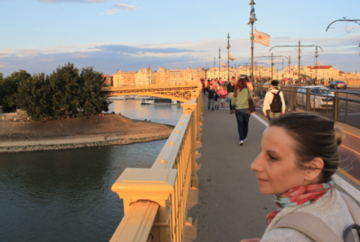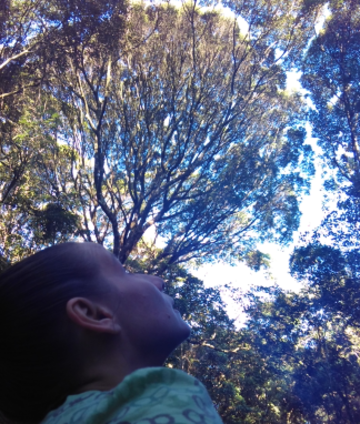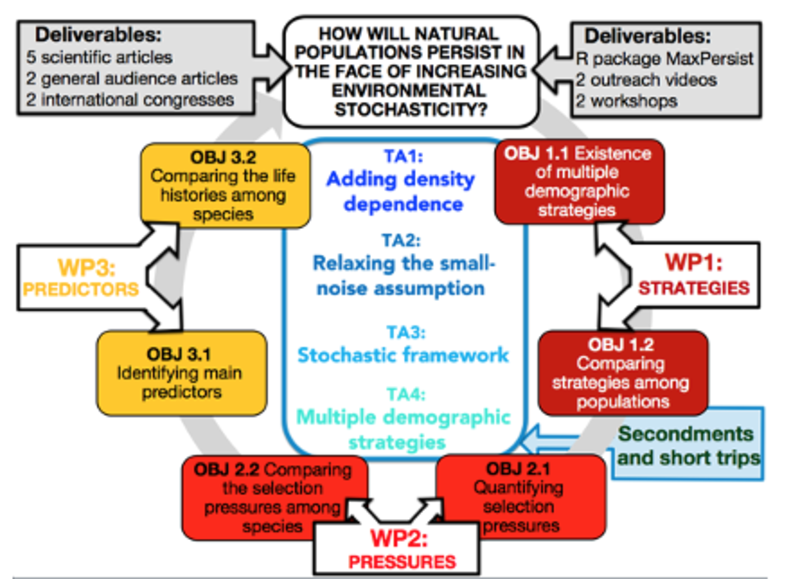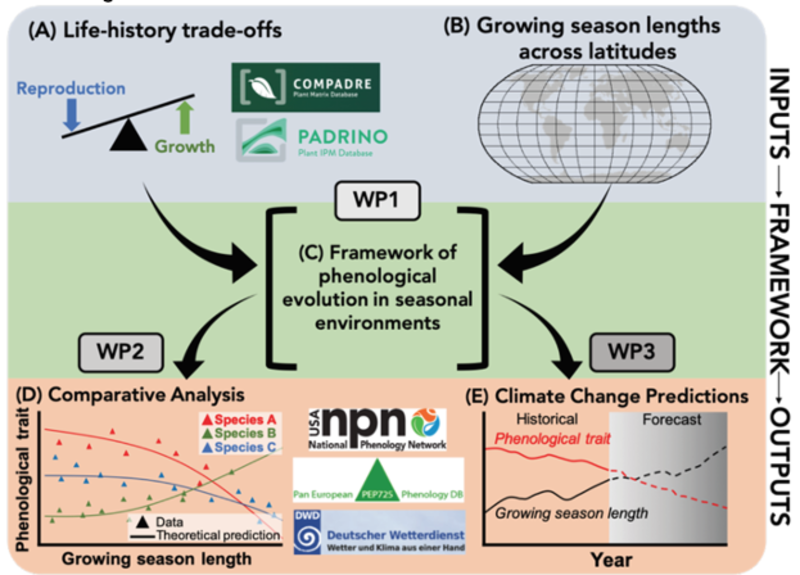Two Marie Curie fellows to join us soon!
(Scroll down for Portuguese version)
It is with great pleasure that we officially announce the success of two incoming research fellows, Dr Maja Kajin and (soon-to-be Dr) John Park, who, thanks to the competitive support of the Marie-Skłodowska Curie Actions, will soon be joining the Salgo team. Below, a bit about them, their background, and what they’ll be working on with us once they join us in a few months:
Dr Maja Kajin
My name is Maja Kajin (pronounced /Maya Kayin/, Fig.1). I was born in Ljubljana, Slovenia (ex Yugoslavia). I will be joining The SalGo team at Oxford in summer/fall of 2021 within the Marie-Skłodowska Curie Individual fellowship scheme.

Figure 1. Budapest (Hungary), 2015 | [Portuguese] Budapeste (Hungria), 2015.
I studied Environmental and Resource Management at the Brandenburg University of Technology, Cottbus, Germany. This interdisciplinary study course provided me with an engineer’s point of view, which was crucial for my later development as a population ecologist and modeler. This degree also took me to a 6-month exchange program in Brazil where I fully developed my passion for ecology. The time spent in Brazil allowed me to meet a part of this wonderful country, especially eye-catching to ecologists for its outstanding biodiversity. I fell in love with the Atlantic forest (Fig. 2), which convinced me to come back to Brazil two years later, after obtaining my BSc in Germany.

Figure 2. Atlantic forest canopies, Floresta da Tijuca National park, Rio de Janeiro, Southeastern Brazil | Dosseis da Mata Atlântica, Parque Nacional da Floresta da Tijuca, Rio de Janeiro, Sudeste do Brasil.
Captivated by the complexity of the Atlantic Forest, I took up a Master's program in Ecology at the Federal University of Rio de Janeiro, continued to a Ph.D. program in Genetics (population genetics) and a post-doctoral position at the same university. By the end of my post-doc, I’ve fully developed my passion for population ecology joining the three fields of biology I’ve learned - ecology, population genetics, and demography. Since 2012 I lecture Ecology, Population Ecology, and Ecological modeling at the Department of Ecology, State University of Rio de Janeiro. At the end of 2018, my partner Cezar (Brazilian artist - painter) and me returned to my home country, Slovenia, where I took up a sabbatical, joining the Group of Animal Ecology at the Department of Biology, University of Ljubljana. In 2019 our son Vincent was born.
Throughout my academic path, there was but one particular aspect of natural populations that fascinated me most: the tremendous variation of life-history strategies (for example, the “choice” of living a long life and reproducing only once in a lifetime versus living a short life and reproducing many times), and variation of population vital rates (such as survival and fecundity). These strategies vary tremendously throughout species, populations, and individuals, and can be easily observed in nature. Such a variation is a response to changes in environmental conditions (among others) that wild-living populations need to face to persist. With the challenge of understanding how the environment affects the variation of life histories and vital rates, I was lucky enough to meet Rob Salguero-Gómez. With his help and support from Tim Coulson, the ideas began to take shape - and ultimately resulted in a recently granted Marie Curie project named MaxPersist.
With MaxPersist, I will examine at Oxford how anthropogenic changes may push plant and animal species out of their life-history optima. It is a known fact that the Planet is witnessing now more droughts, fires, flooding, and other extreme events, while global climatic models forecast drastic changes in environmental conditions. How will this influence the life-history strategies of plants and animals? Will the number of offspring of those species that typically produce constant litter numbers start to vary more to survive the increasing environmental change? Can populations develop novel demographic strategies to persist increasing environmental changes in time before it’s too late? In MaxPersist I, under Rob’s supervision and a carefully chosen group of world-leading scientists, will develop novel theoretical advances to better understand how life-history strategies of natural populations worldwide may change, and use this knowledge to predict how populations of hundreds of species worldwide will persist in the face of increasing environmental changes (Fig. 3).

Figure 3. Organigram linking MaxPersist’s Objectives (dark red, red & orange) to their respective Hypotheses (H1 in dark red, H2 in light red and H3 in yellow) via three Work Packages (STRATEGIES, PRESSURES, PREDICTORS), where key Theoretic Advances are highlighted (TA1, TA2, TA3 and TA4) to address the project’s main question: how will natural populations persist in the face of increasing environmental stochasticity? I plan two secondments and several short visits to project partners to help me develop the theoretic advances (TA1-4) | Organograma que liga os objetivos do MaxPersist (vermelho escuro, vermelho claro e laranja) às suas respectivas hipóteses (H1 em vermelho escuro, H2 em vermelho claro e H3 em amarelo) por meio de três Pacotes de Trabalho (ESTRATÉGIAS, PRESSÕES, PREDITORES), onde os avanços teóricos principais são destacados (TA1, TA2, TA3 e TA4) para abordar a questão principal do projeto: como as populações naturais persistirão em face à crescente estocasticidade ambiental? Planejo dois intercâmbios curtos e várias visitas a parceiros do projeto para me ajudarem a desenvolver os avanços teóricos (TA1-4).
I’m very grateful to have the opportunity to join a team like SalGo. The time in Oxford will be crucial for my further professional development as well as an important personal experience. I’m looking forward to the motivating scientific debates as well as leisure meetings and conversations with the incredible team members and collaborators. I’m excited to finally put the ideas of MaxPersist, which have been intriguing me since a long time ago, into life! This wouldn’t have been possible without joining the SalGo team.
(Soon-to-be-Dr) John Park
Hello all! My name is John Park (Fig. 4). I am thrilled to join the inter-disciplinary/-national SalGo Team and Oxford in the fall of 2021 as a Marie-Skłodowska Curie Individual Fellow.
Figure 4. John doing fieldwork at Tatoosh Island, WA, USA | John fazendo trabalho de campo em Tatoosh Island, WA, EUA.
I began my ‘life-history’ in South Korea, and immigrated to spend much of my juvenile and adolescent life stages in Toronto, Canada. The Canadian north—the remoteness, the colors, the expansiveness—inspired an early thirst for adventure, and a passion for understanding and conserving wilderness (Fig. 5).

Figure 5. A few paintings by J Park inspired by travels and fieldwork in the Canadian arctic. Left: Journey (2012). Right: Tundra swans at dusk (2014) | Algumas pinturas de J Park inspiradas em viagens e trabalho de campo no Ártico canadense. À esquerda: Journey (2012). À direita: cisnes-tundra ao anoitecer (2014)
I studied Ecology & Evolutionary Biology at Yale University in the U.S. for my undergrad, where my mentors Dr. David Post and Dr. Steve Stearns were hugely influential in instilling in me an excitement for asking big questions. In particular, I became captivated by seasonal patterns of life (e.g. flowering, emergence, migration, reproduction) we see all over the world, and how life-history evolution and ecological theory might elucidate deep causal forces behind such universal phenomena. I have had the fortune of pondering the evolution of seasonal biological patterns while living in the remote Canadian arctic for three full seasons, in freshwater lakes of northeastern U.S., in the woodlands of Australia, and in the high arctic archipelago of Svalbard, Norway. My passion for understanding these phenomena drives me to this day, and shapes much of my future research interests.
I began my PhD at the University of Chicago in the lab of Dr. Tim Wootton to work on general and scalable theory of life-history evolution in oscillating environments. I honed in on copepods living in wave-splashed rock pools of the U.S. Pacific Northwest coast as an ideal system to gather high volumes of detailed data quickly over a couple of field seasons. I then ran a long-term experiment in the lab with the copepods to recreate and manipulate the natural selection dynamics of life-histories. Through my three-pronged approach consisting of theory + testing it in nature + experimentally studying the mechanisms, I learned that regular cycles in the environment—such as seasons and tides—exert a complex but tractable force shaping the distribution of life-history strategies in dynamic populations.
My Marie Curie project “CyclesOfLife” (Fig. 6) will be an exciting adventure in many ways. I hope to expand my horizon while deepening my understanding of how life-histories and phenologies (timing of biological events) evolve. First, I will be taking my first dip into the world of plants. Second, I will integrate macroecological and microevolutionary perspectives with my collaborators to enrich the theory. Third, I am thrilled to work with the SalGo team and colleagues to harness big data such as COMPADRE to test and refine the theory at ambitious global scales.

Figure 6. Integrated flow of Work Packages in the Marie-Skłodowska Curie Actions project “CyclesOfLife”. Life-history trade-offs from demographic databases (A) and growing season lengths across latitudes (B) will feed into the theoretical framework (C), which will produce phenological calculations for comparative study (D) and forecasts (E) | Fluxo integrado de pacotes de trabalho no projeto de ações Marie-Skłodowska Curie “CyclesOfLife”. Demandas conflitantes de história de vida de bancos de dados demográficos (A) e comprimentos de estação de crescimento em latitudes (B) alimentarão a estrutura teórica (C), que produzirá cálculos fenológicos para estudo comparativo (D) e previsões (E).
Climate change has been distorting the seasonal patterns of the physical environment all over the world, but much of the eco-evolutionary consequences for biological cycles remain a puzzle. It is both fascinating and alarming. CyclesOfLife is aimed at establishing a unified eco-evolutionary framework of phenological change, and making theoretically grounded forecasts under climate change scenarios. Beyond my project objectives, I am excited and grateful to be a part of the highly creative, productive, and welcoming communities of the SalGo Team and the Department of Zoology at Oxford. I am always keen to chat about ideas, and conjure up creative collaborative pursuits – both scientific and outreach.
[POR] Translation by Dr Maja Kajin:
Dois bolsistas Marie Curie se juntarão ao time em breve!
É com grande prazer que anunciamos oficialmente o sucesso de dois novos bolsistas de pesquisa, Dra. Maja Kajin e (futuro Dr.) John Park, que, graças ao apoio competitivo das Ações Marie-Skłodowska Curie, em breve farão parte da equipe SalGo. Abaixo, um pouco sobre eles, seu histórico e no que trabalharão conosco, assim que se juntarem a nós em alguns meses:
Dra. Maja Kajin
Meu nome é Maja Kajin (pronunciado / “Maia Kain” /, Fig.1). Nasci em Ljubljana, Eslovênia (ex-Iugoslávia). Me juntarei à equipe SalGo em Oxford no verão/outono de 2021 dentro do esquema de bolsas individuais Marie-Skłodowska Curie.
Estudei Gestão Ambiental e de Recursos Naturais na Universidade de Tecnologia de Brandenburgo, Cottbus, Alemanha. Esse curso de estudo interdisciplinar me propiciou um ponto de vista de engenheiro, o que foi crucial para meu desenvolvimento posterior como ecóloga e modeladora populacional. Esse curso também me levou a um programa de intercâmbio de 6 meses no Brasil, onde desenvolvi por inteiro a minha paixão pela ecologia. O tempo que passei no Brasil me permitiu conhecer uma parte desse país maravilhoso, que chama a atenção de ecólogos principalmente por sua notável biodiversidade. Me apaixonei pela Mata Atlântica (Fig. 2), o que me convenceu a voltar ao Brasil dois anos depois, após obter meu bacharelado na Alemanha.
Cativada pela complexidade da Mata Atlântica, fiz o mestrado em Ecologia na Universidade Federal do Rio de Janeiro, doutorado em Genética (genética populacional) e pós-doutorado na mesma universidade. Ao final do meu pós-doutorado, desenvolvi a minha paixão pela ecologia de populações, unindo os três campos da biologia que aprendi - ecologia, genética populacional e demografia. Desde 2012 leciono Ecologia, através das disciplinas Ecologia Populacional e Modelagem Ecológica, no Departamento de Ecologia da Universidade do Estado do Rio de Janeiro. No final de 2018, meu parceiro Cezar (artista - pintor brasileiro) e eu voltamos para o meu país, Eslovênia, onde tirei um ano sabático, ingressando no Grupo de Ecologia Animal do Departamento de Biologia da Universidade de Ljubljana. Em 2019 nasceu nosso filho Vincent.
Ao longo de minha trajetória acadêmica, houve um aspecto particular das populações naturais que mais me fascinou: a tremenda variação de estratégias de história de vida (por exemplo, a "escolha" de viver uma vida longa e reproduzir apenas uma vez na vida versus viver um vida curta e reprodução muitas vezes), e a variação das taxas vitais da população (como sobrevivência e fecundidade). Essas estratégias variam enormemente entre as espécies, populações e indivíduos, e podem ser facilmente observadas na natureza. Essa variação é uma resposta às mudanças nas condições ambientais (entre outras) que as populações selvagens precisam enfrentar para persistir. Com o desafio de entender como o ambiente afeta a variação das histórias de vida e taxas vitais, tive a sorte de conhecer professor Rob Salguero-Gómez. Com a ajuda e o apoio de professor Tim Coulson, as ideias começaram a tomar forma - e finalmente resultaram em um projeto Marie Curie recentemente concedido chamado MaxPersist.
Com MaxPersist, examinarei em Oxford como as mudanças antropogênicas podem empurrar as espécies vegetais e animais para fora de suas estabelecidas histórias de vida. É um fato conhecido que o planeta está testemunhando agora mais secas, incêndios, inundações e outros eventos extremos, enquanto os modelos climáticos globais preveem mudanças drásticas nas condições ambientais. Como isso influenciará as estratégias de história de vida de plantas e animais? O número de descendentes das espécies que normalmente produzem números constantes de filhotes começará a variar mais para sobreviver à crescente mudança ambiental? As populações podem desenvolver novas estratégias demográficas para persistir em mudanças ambientais crescentes antes que seja tarde demais? No MaxPersist irei, sob a supervisão de prof. Salguero Gómez e um grupo cuidadosamente escolhido de cientistas líderes mundiais, desenvolver novos avanços teóricos para entender melhor como estratégias de história de vida de populações naturais em todo o mundo podem mudar e usar esse conhecimento para prever como populações de centenas de espécies em todo o mundo persistirão em face das crescentes mudanças ambientais (Fig. 3).
Sou muito grata pela oportunidade de me juntar a uma equipe como a SalGo. O tempo em Oxford será crucial para meu desenvolvimento profissional, e é uma importante experiência pessoal. Estou ansiosa para os debates científicos motivadores e reuniões de lazer e conversas com os incríveis membros da equipe e colaboradores. Estou animada para finalmente colocar as ideias de MaxPersist em prática, pois têm me intrigado desde muito tempo atrás. Isso não seria possível fora do âmbito da equipe SalGo.
(Futuro Dr.) John Park
Olá a todos! Meu nome é John Park (Fig. 4). Estou emocionado por ingressar na equipe interdisciplinar/nacional SalGo e em Oxford no outono de 2021 como bolsista individual Marie-Skłodowska Curie.
Comecei minha ‘história de vida’ na Coréia do Sul e imigrei para passar grande parte da minha vida juvenil e adolescente em Toronto, Canadá. O norte canadense - o isolamento, as cores, a amplitude - inspirou uma sede precoce por aventura e uma paixão por compreender e conservar a natureza (Fig. 5).
Fiz graduação em Ecologia e Biologia Evolutiva na Universidade de Yale nos Estados Unidos, onde meus orientadores, Dr. David Post e Dr. Steve Stearns, foram extremamente influentes em instilar em mim o entusiasmo por fazer grandes perguntas. Em particular, fiquei cativado por padrões sazonais de vida (por exemplo, floração, emergência, migração, reprodução) que vemos em todo o mundo, e como a evolução da história da vida e a teoria ecológica podem elucidar forças causais profundas por trás de tais fenômenos universais. Tive a sorte de refletir sobre a evolução dos padrões biológicos sazonais enquanto vivia no remoto ártico canadense por três temporadas inteiras, em lagos de água doce do nordeste dos EUA, nas florestas da Austrália, e no arquipélago alto ártico de Svalbard, na Noruega. Minha paixão por compreender esses fenômenos me incentiva até hoje e molda muitos dos meus futuros interesses de pesquisa.
Comecei meu doutorado na Universidade de Chicago no laboratório do Dr. Tim Wootton para trabalhar na teoria geral e escalonável da evolução da história de vida em ambientes oscilantes. Eu me concentrei em copépodes que vivem em piscinas rochosas salpicadas de ondas na costa noroeste do Pacífico dos Estados Unidos como um sistema ideal para reunir rapidamente grandes volumes de dados detalhados durante algumas temporadas de campo. Em seguida, fiz um experimento de longo prazo no laboratório com os copépodes para recriar e manipular a dinâmica da seleção natural das histórias de vida. Por meio da minha abordagem tripla que consiste em teoria + testá-la na natureza + estudar experimentalmente os mecanismos, aprendi que os ciclos regulares no ambiente - como estações e marés - exercem uma força complexa, mas tratável, moldando a distribuição das estratégias de história de vida em populações dinâmicas.
Meu projeto Marie Curie “CyclesOfLife” (Fig. 6) será uma aventura emocionante de várias formas. Espero expandir meu horizonte ao mesmo tempo em que aprofundo minha compreensão de como as histórias de vida e as fenologias (cronologia dos eventos biológicos) evoluem. Primeiro, darei um mergulho no mundo das plantas, o que é inédito para mim. Em segundo lugar, integrarei as perspectivas macroecológicas e microevolutivas com meus colaboradores para enriquecer a teoria. Terceiro, estou entusiasmado por trabalhar com a equipe e colegas do SalGo para aproveitar o big data, como o COMPADRE, para testar e refinar a teoria em escalas globais ambiciosas.
A mudança climática tem distorcido os padrões sazonais do ambiente físico em todo o mundo, mas muitas das consequências eco-evolutivas para os ciclos biológicos permanecem um enigma. É fascinante e alarmante. CyclesOfLife visa estabelecer um quadro ecológico evolutivo unificado de mudanças fenológicas e fazer previsões teoricamente fundamentadas em cenários de mudanças climáticas. Além dos objetivos do meu projeto, estou animado e grato por fazer parte das comunidades altamente criativas, produtivas e acolhedoras da Equipe SalGo e do Departamento de Zoologia de Oxford. Estou sempre disposto a conversar sobre ideias e invocar buscas colaborativas criativas - tanto científicas quanto de divulgação.



